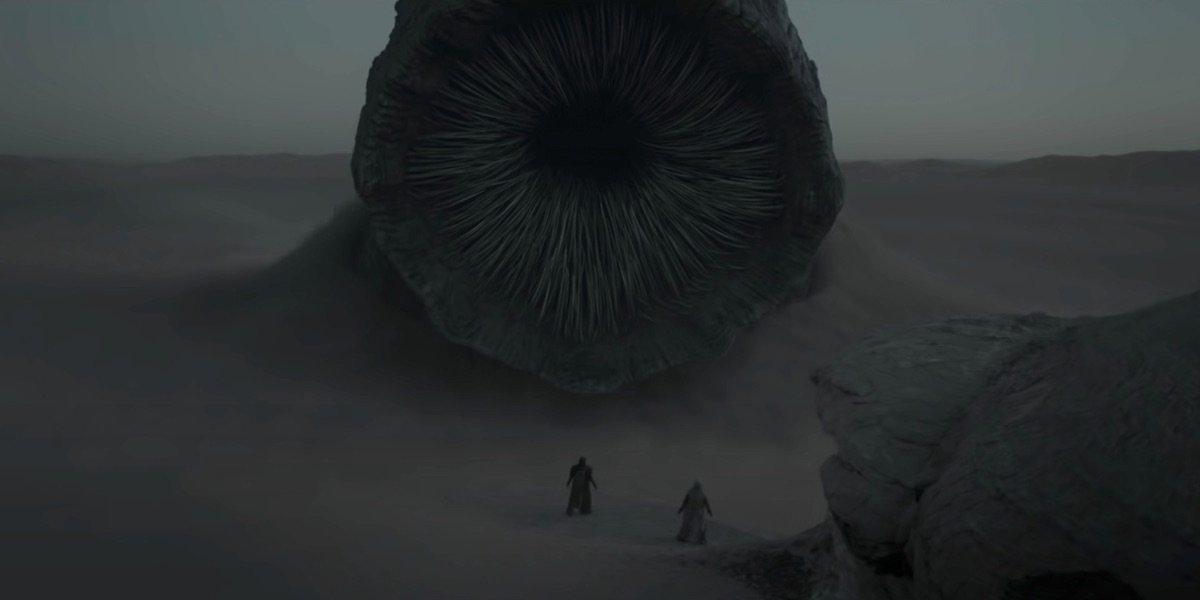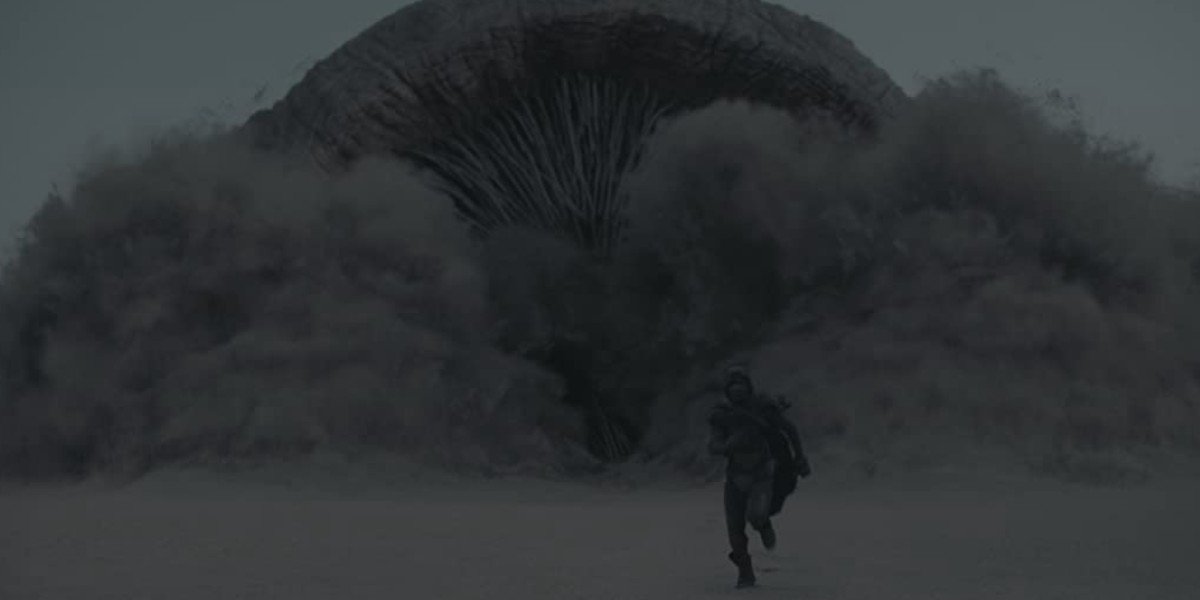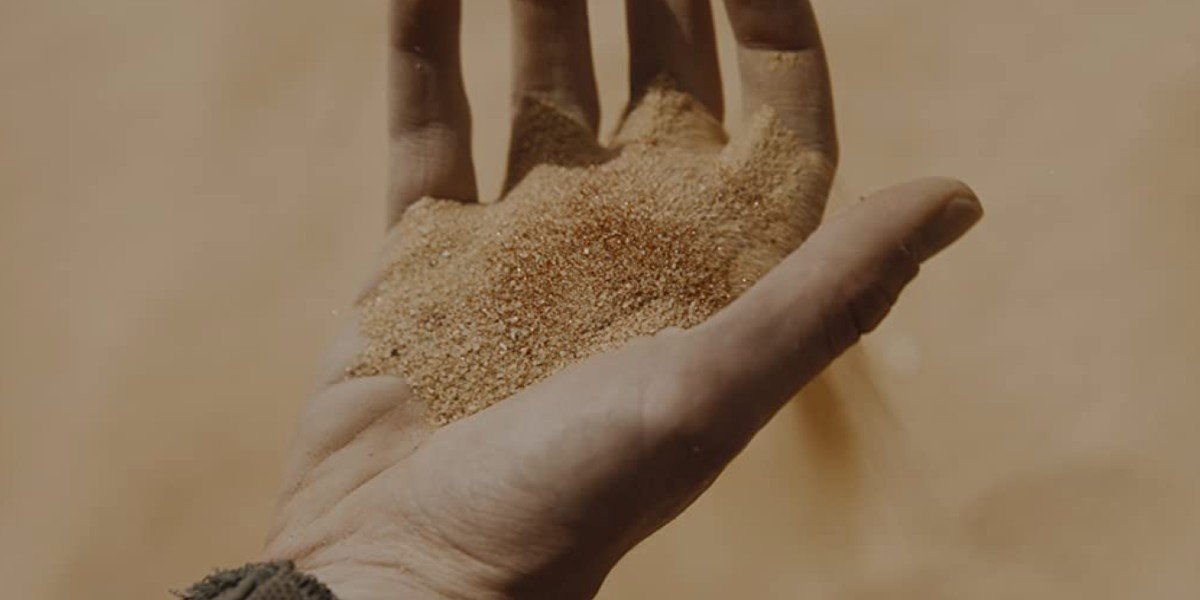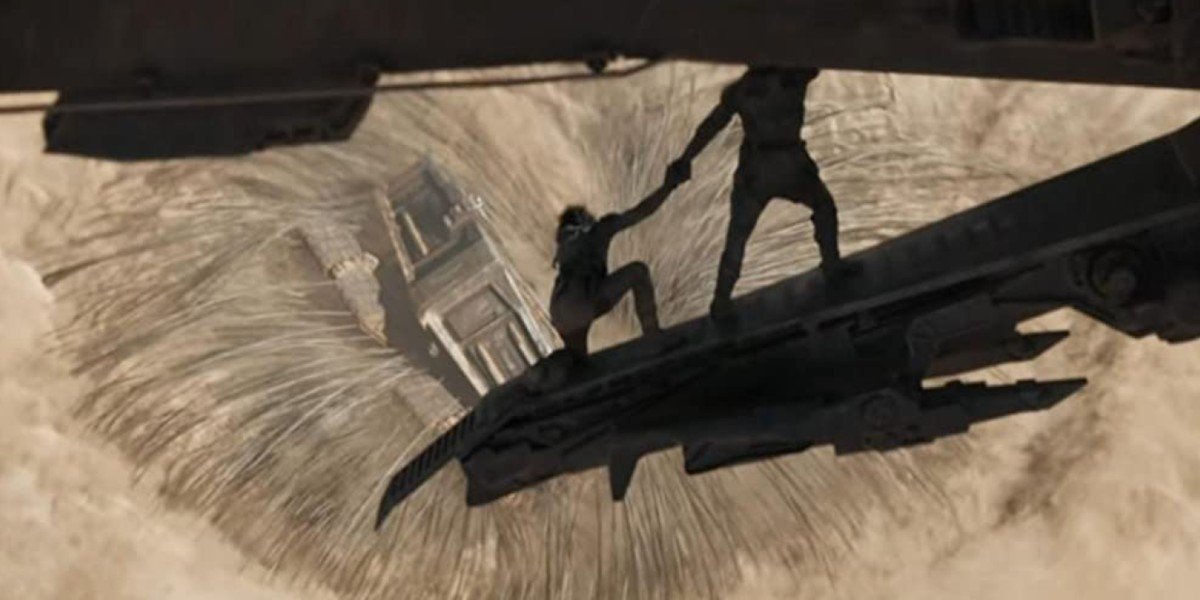Dune's Giant Sandworm, Explained Ahead Of The Denis Villeneuve Movie

Dune’s giant sandworms are perhaps one of the most enduring and influential monsters in the science fiction canon. Even if you haven’t seen the original Dune movie or read the books, there’s a good chance you’ve heard of the infamous sandworms. You might have even seen ripoffs and homages in other movies, like Star Wars and Tremors. But at the end of the day, Dune’s sandworms are truly original and often misunderstood.
If you saw the epic trailer for Denis Villeneuve’s Dune remake, then you caught a couple of insane glimpses of the sandworm. Even with those appearances, you likely understood the importance of the sandworms, but just weren’t sure exactly how important and influential they are to Dune. Well, I’m here to tell you, you can’t have Dune without the sandworms; the story is totally dependent and centered around them. With that said, it’s a good idea to get a firm grasp on them. So let’s hop in.

Sandworms Are Enormous
I know, this is kind of a “duh” statement, but it can’t be stated enough. Dune’s sandworms are enormous, greatly eclipsing anything we have on Earth. In the book’s Terminology of the Imperium section, some sandworms have been witnessed to be longer than 400 meters (roughly 1,312 ft) and around 40 meters (roughly 131 ft) in diameter.
Larger sandworms likely exist, though. In the book, when Paul Atreides summoned a sandworm, it's said the worm that came out of the desert sand “appeared to be around a half a league long and the rise of the sandwave at its cresting head was like the approach of a mountain.” A half a league is roughly 2,778 meters (or 9,121 ft) which is, of course, massive. On another occasion, when Paul met a sandworm for the first time, it was said, "Its mouth was some eighty meters in diameter…” All of this is to say that sandworms are huge on the desert planet of Arrakis.

They’re Practically Indestructible
Along with the sandworms’ size, they’re also incredibly tough and are pretty much nigh-impossible to kill. Early on in the Dune book, the planetologist of Arrakis, Liet-Kynes, informs the Duke Leto Atreides about the sandworms and says this about them:
'High voltage electrical shock applied separately to each ring segment is the only known way of killing and preserving an entire worm,' Kynes said. 'They can be stunned and shattered by explosives, but each ring segment has a life of its own. Barring atomics, I know of no explosive powerful enough to destroy a large worm entirely. They're incredibly tough.'
Also, in Terminology of the Imperium, it says the sandworms can be killed by water; it’s apparently poisonous to them, but that's a moot point. Arrakis is practically devoid of water, making water a valuable resource. If humans have water on Arrakis, they're going to use it for themselves, not as a weapon. Since they’re virtually invincible, sandworms either kill each other or live to a very old age.

Their Larvae Create The Spice Melange
There’s no reason to kill the sandworms, though. In fact, that would be a big mistake. That’s because the sandworms’ larvae produce the melange, also simply called “the spice.” In Dune, the spice is a mildly addictive drug that provides the user with medicinal and mystical abilities, like long life, greater vitality and prescience. The prescience allows for interstellar travel, making the spice a big prize in the universe. Even more, the spice is only found on Arrakis, making the planet a key strategic outpost for the empire.
CINEMABLEND NEWSLETTER
Your Daily Blend of Entertainment News
But the sandworms don’t make it easy for humans to harvest spice. It’s a treacherous occupation. Using an aerial transport called a “Carryall” that carries a harvester known as a “Crawler,” they collect the spice and monitor for sandworms in the area. When a sandworm is detected, they pull the harvester away to safety. But things can go sideways pretty quickly and put men in harm’s way. Since sandworms are directly responsible for producing the spice, though, it’s more advantageous for humans to keep them alive.

Sandworms Go By Many Names
“Sandworm” is the general term for the enormous beasts crawling underneath the desert. However, they go by different names, many of which are given to them by the Fremen, the native people living on Arrakis.
The Fremen worship the sandworms as agents of God and have co-existed with them for a long time. As such, they have a deep reverence for the sandworms and call them, “Shai-Hulud,” which translates for them as “The Old Man of the Desert,” “Grandfather of the Desert,” and “Old Father Eternity.” Sometimes they’re just called “Makers.” There’s also been a scientific name given to the sandworms: Geonemotodium arraknis (also Shaihuludata gigantica).

Sandworms Can Be Avoided, Summoned and Ridden
Despite the sandworms' massive size, indestructible nature and the danger they pose, the Fremen have a relationship with the creatures and developed ways to safely co-exist with them. When walking on the Arrakis desert sand, sandworms are attracted to rhythmic movements. So the Fremen learned to avoid being detected by merely stepping out of rhythm across the sand.
They can also summon the sandworms at will. To attract a sandworm, they use a device called a “thumper” that makes a rhythmic vibration on the sand. Now you’re probably wondering, “Why would you ever want to summon one of them?” Believe it or not, the Fremen know how to ride the sandworms.
To ride a sandworm, the Fremen summon one, run alongside of it and attach a “maker hook” to the soft tissue in one of its ring segments. The sand irritates the soft tissue, causing the worm to rotate upward, lifting the rider to the top. Once on top, the rider will use hooks to steer the worm and also cause it to go faster. Riding a worm for the first time is a common coming-of-age ritual for the Fremen.

The Holtzman Shield Makes Them Mad
In the Dune universe, humans have invented a body shield that protects them from fast, incoming attacks. It’s called the Holtzman Shield. You may recall seeing them in use in the Dune trailer when Paul Atreides and Gurney Halleck are fighting each other with knives. Director Denis Villeneuve said they developed a new kind of combat for the movie with these shields in mind.
However, using them on Arrakis, especially out on the desert sands, is not a great idea. The Holtzman Shield not only attracts the sandworms, it enrages them. Here's what Liet-Kynes says about the shields in the book:
Activate a shield within the worm zone and you seal your fate. Worms ignore territory lines, come from far around to attack a shield. No man wearing a shield has ever survived such an attack.
In other words, don't rely on that piece of technology helping you out should you cross paths with a sandworm.

The Fremen Make Knives From Sandworm Teeth
Take a good look at a sandworm, and one defining feature (other than their overall size) is the size of their many, many teeth. The Fremen will extract the teeth of dead sandworms to create the crysknife, a prized possession of any Fremen.
To make the crysknife, the Fremen ground down a sandworm tooth and create its shape, which is almost always 20 centimeters long. According to the Terminology of the Imperium, the crysknife has two forms: fixed and unfixed. The unfixed knife requires a human body’s electrical field; otherwise, it’ll eventually disintegrate. The fixed knife uses a chemical process to keep the knife permanently intact.
Hopefully all of the above information gave you a better picture of Dune's sandworms. I'll leave you with this: when writing Dune, Frank Herbert envisioned the sandworms to be similar to the medieval dragons of old, like in Beowulf, that guard treasure from human invaders. I think this is the best way to view them. They’re ancient guardians of a source of power that humans so desperately desire. They’re essentially the center of the entire Dune universe. Again, you can’t have Dune without the sandworms.
Previously intended to hit theaters on December 18, Denis Villeneuve's Dune will now arrive on October 1, 2021, so keep visiting CinemaBlend for more updates on its progress.











